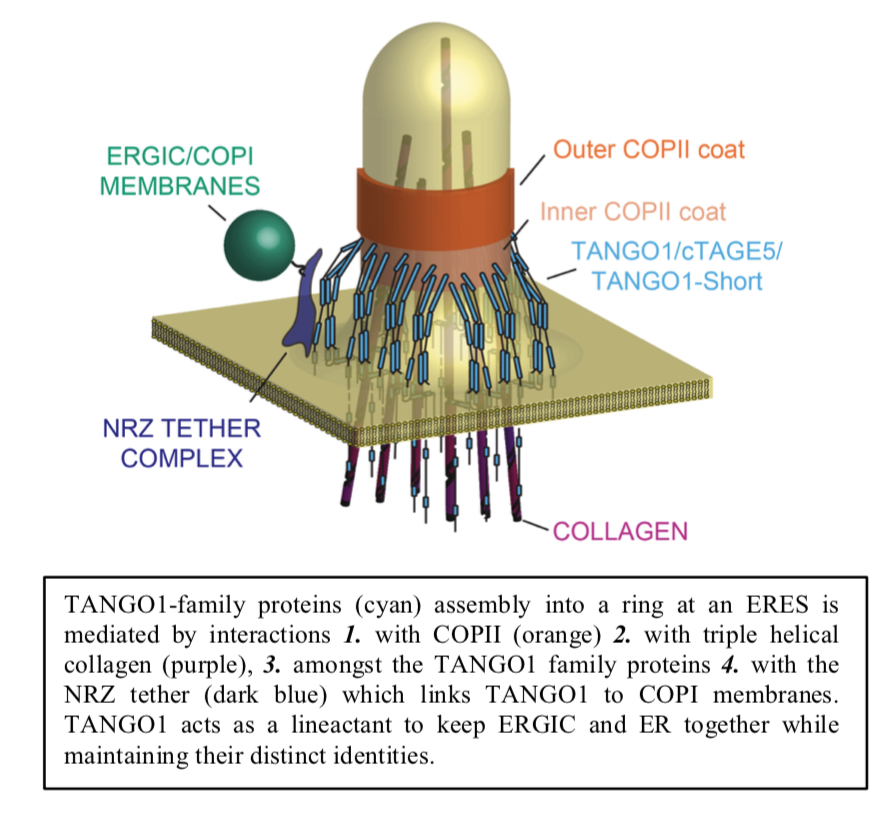The Centre of New Technologies invites to a seminar by
Dr Ishier Raote
Centre for Genomic Regulation, Barcelona, Spain
Title: TANGO1 in collagen secretion: Function and dysfunction
Date: 19th February 2020 (Wednesday)
Time: 11:00 am
Venue: Centre of New Technologies, Banacha 2C, Lecture Hall 0142 (Ground floor)
Host: Dr Piotr Szwedziak
Secreted collagens compose 25% of our dry body weight and are necessary for tissue organization, skin and bone formation. But how are these bulky cargoes, that are too big to fit into a conventional COPII vesicle, exported from the ER? Our discovery of TANGO1, a ubiquitously expressed, ER-exit-site-resident, transmembrane protein, has made the pathway of collagen secretion amenable to molecular analysis. TANGO1 acts as a scaffold to connect collagens in the lumen to COPII coats on the cytoplasmic side of the ER. However, the growth of the collagen containing mega transport carrier is not simply by accretion of a larger COPII-coated patch of ER membrane, but instead I propose that TANGO1 creates a tunnel for cargo transport between the ER and a post-ER compartment. This mechanism is conceptually different from the conventional model for carrier formation, which posits that membrane is derived entirely from a donor compartment. This proposal revises George Palade’s classical schema of carrier-mediated traffic in the secretory pathway. We have seen that TANGO1 rings the ER exit site and thus organizes a sub-compartment or “isolation chamber” within the ER. To assemble the ring, TANGO1 and its interactors mutually recruit, corral and organize each other. Most recently, we have identified the first TANGO1-associated syndromal disease in humans, which mainly manifests as a collagenopathy. Thus, in the short span of a decade, we have identified TANGO1, described a novel mechanism for its function in collagen secretion thereby proposing a radical revision of the classical views of the secretory pathway and now, we have identified a role of TANGO1 in a novel human collagenopathy.



